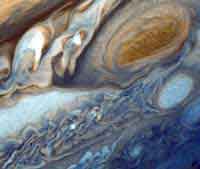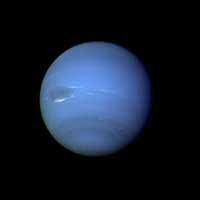|
 |
|
|
Voyagers
1 and 2:
|
|
|
|
The girls are standing next to a full-size model of one of the Voyager spacecraft. |
|
The twin Voyager spacecraft were launched a few days apart in 1977. They both set out to explore Jupiter and Saturn. Uranus and Neptune were later added to Voyager 2's mission. The Voyagers' missions to the outer planets have given us more new information about them than had existed throughout all history. Both spacecraft are still going strong! Voyager 1 is the farthest human-made object from Earth. They are now studying the outer reaches of the Sun's influence and beyond, into the space between stars.
|
|
|
Jupiter's great red spot is a giant storm big enough to swallow up two Earths! It has been seen from Earth for over 300 years.
Here's an animation of the Voyager 2 flyby of Saturn. (NASA video clip in QuickTime format, 800Kb.)
This is a montage of pictures taken by Voyager 1 of Saturn with 6 of its known 16 moons.
Uranus is the only planet we know of that rotates on its side! This image was made by Voyager 2, and was processed in false color to better show the structure of the atmosphere. It also has lines of latitude and longitude drawn on it to show the axis of rotation.
When Voyager 2 took this picture in 1989, Neptune had a dark spot in its atmosphere as big as Earth. But in 1994, the Hubble Space Telescope (which orbits Earth) revealed that the spot had disappeared! What was it and where did it go? |
More amazing facts:
|
|
|
|||||










